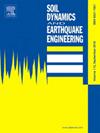新型物理约束神经网络:地面运动模型说明
IF 4.2
2区 工程技术
Q1 ENGINEERING, GEOLOGICAL
引用次数: 0
摘要
地震动模型(GMM)对于地震灾害分析至关重要,可以使用经验方法或机器学习方法开发。前者通常会导致次优的预测性能,后者虽然能提供更准确的结果,但经常面临可解释性和可说明性方面的挑战。为了克服这些局限性,本研究提出了一种新颖的物理约束神经网络(PCNN),通过设计以物理领域知识为基础的专门神经网络架构,对假设空间进行约束。这种方法能够通过数据驱动学习更新或推导出有偏差或未知的成分。以 GMM 的发展为例,PCNN 是通过在传统神经网络中重新配置参数、激活函数和层连接来构建的,其数学形式与已建立的经验模型保持一致。这种物理约束方法增强了网络架构的可解释性及其输出的可解释性。通过利用先进的机器学习技术和特定领域的物理约束,PCNN 可完善经验模型中的次优系数,从而实现全局最优模型系数并提高预测性能。本文章由计算机程序翻译,如有差异,请以英文原文为准。
A novel physics-constrained neural network: An illustration of ground motion models
Ground motion model (GMM) is essential for seismic hazard analysis and can be developed using either empirical or machine learning approaches. The former often results in suboptimal predictive performance, and the latter frequently faces challenges related to interpretability and explainability although providing more accurate results. To overcome these limitations, this study proposes a novel physics-constrained neural network (PCNN) that incorporates constraints on the hypothesis space through designing specialized neural network architectures informed by physical domain knowledge. This approach enables the updating or derivation of biased or unknown components through data-driven learning. Using the development of GMMs as an illustration, the PCNN is constructed to maintain the mathematical form consistent with established empirical models by reconfiguring parameters, activation functions, and layer connections within a conventional neural network. This physics-constrained approach enhances both the interpretability of the network's architecture and the explainability of its outputs. By leveraging both the advanced machine learning techniques and the domain-specific physical constraints, the PCNN refines the suboptimal coefficients in empirical models, which could achieve the globally optimal model coefficients and improve predictive performance.
求助全文
通过发布文献求助,成功后即可免费获取论文全文。
去求助
来源期刊

Soil Dynamics and Earthquake Engineering
工程技术-地球科学综合
CiteScore
7.50
自引率
15.00%
发文量
446
审稿时长
8 months
期刊介绍:
The journal aims to encourage and enhance the role of mechanics and other disciplines as they relate to earthquake engineering by providing opportunities for the publication of the work of applied mathematicians, engineers and other applied scientists involved in solving problems closely related to the field of earthquake engineering and geotechnical earthquake engineering.
Emphasis is placed on new concepts and techniques, but case histories will also be published if they enhance the presentation and understanding of new technical concepts.
 求助内容:
求助内容: 应助结果提醒方式:
应助结果提醒方式:


